Ever since I learned there were certain JR passes that were available to foreign residents, I knew I wanted to plan a trip using one of those passes because I missed catching the shinkansen to explore Japan. Since we moved here and got a car, it's typically been cheaper and easier to drive versus catching the shinkansen so it never made sense to ride it if paying ala carte.
This is an overview of our 5-day itinerary making use of the JR East (Tohoku) Rail Pass to get us all over Tohoku within the validity period, starting and ending at Tokyo station. I tried to maximize the use of JR lines and the number of places we visited to hit as many landmarks and points of interest that were accessible. This trip was specifically planned with the time of year in mind (late May), but if you're planning to go in winter or early spring, your itinerary might look a lot different due to the weather!
Each of the 5 days will get a separate blog post where I go into more detail/add more photos of each activity if you're interested. This post will provide a summary of our trip as a whole with highlights of each day to showcase what's possible with this rail pass!
JR East (Tohoku) Rail Pass details
Validity period: 5 days (ex. Friday through Tuesday)
Valid area: all JR East lines (including Tohoku, Akita, Yamagata, Joetsu and Hokuriku Shinkansen) + more
Who can use it: Anyone with a foreign/non-Japanese passport. Tourist entry stamp not required!
I purchased from: JR East Japan Railway Company site
and picked up from: JR Yokohama station Travel Service Center (but other pick up locations are listed here)
Reserving tickets: really easy to do via JR East website and pick up from eligible ticket machines or Travel Service Centers or Midori no Madoguchi offices.
JR Rail Pass notes:
- My husband and I were the only ones in our group to use the JR East (Tohoku) Rail Passes. The other 4 members of my family chose to purchase the Japan-wide 7-day Rail Pass due to the duration of their stay and the other advantages of it for them. They purchased vouchers and exchanged them once arriving in Japan. Because of this, they weren't able to reserve seats using the JR East website but were able to use the reserved ticket machines at major stations.
- We got all 12 reserved tickets per person for the whole trip prior to leaving on Day 1. If we wanted to change the time of the train (to an earlier or later one) for whatever reason, we needed to go to the Midori no Madoguchi to have a staff member update/change the ticket. It cannot be done at the reserve ticket machines.
Day 1 highlights [full blog post]
Tokyo station --> Hachinohe station
This is optional and depends where you're starting from: it was easiest for us to get a hotel room the night before the first day of the pass (Day 0) near Tokyo station so we wouldn't have to deal with a super early morning leaving from Kanagawa.
We got on the first Hayabusa Shinkansen leaving Tokyo station at 06:32 with reserved tickets (required for this type of train). Because we made the seat reservations fairly close to when we were traveling and due to the popularity of this train/route, we all had to sit separately, but at least got in the same car.
Hasshoku Center (including brunch)
Just under 3 hours later, we get off the shinkansen at Hachinohe station and make our way to Hasshoku Center via bus. We are among the first few in the BBQ area (Shichirin) where the staff shows us to a table, prepares the grill and then we go out into the market to pick/buy what we want to eat!
Of course there's lots of seafood like fish, oysters, clams, etc but there's also at least 2 stalls that sell meat like beef, pork and chicken that can easily be prepared on the grill.
Kabushima Shrine
Next, we made our way over to Kabushima Shrine using the local train. It's known for the large amount of seagulls. And believe me, there are a LOT and they are loud. There's even a community/shared umbrella stand with umbrellas you can borrow to keep you shielded a bit while you explore.
Hachinohe station --> Shin-Aomori
We return to Hachinohe station to continue north via Hayabusa shinkansen to Shin-Aomori.
Nebuta Museum WA RASSE
We booked a hotel in proximity to Aomori station, so we transferred to a local train to get to there, checked into the hotel and then explored a few landmarks in the area like the Nebuta Museum, Aomori Prefecture Tourism Information ASPAM and A-FACTORY.
Day 1 approximate costs:
Non-JR transportation - 100yen (Hasshoku 100yen bus)Locker(s) - 500yen (Hachinohe)
Activities - 400 + 620yen (Shichirin at Hasshoku Market and Nebuta Museum)
Meals - 4500yen (lunch and dinner)
Accommodations - 10,000yen (hotel in Aomori)
Total = 16,120yen (~$120USD)
Aomori Nokkedon
We started the day at Aomori Nokkedon where you can create your own seafood donburi from a variety of different vendors in the market using their ticket system. It's nice to be able to pick and choose what you want from all the different fresh seafood.
Aomori --> Hirosaki
After checking out of the hotel, we used the local/limited express JR trains to get to Hirosaki.
Hirosaki on rental bikes
We rented bikes at Hirosaki station and got moving around the city. We stopped for some apple pie at Angelique, visited Tsugaru Neputa Village and then Hirosaki Castle with a great view of Mt Iwaki. (We also had a rushed fast food lunch on the go lol.)
Tsuru no Maibashi
Moving on from Hirosaki, we took a local train to Mutsu-Tsuruda station and then loaded into two waiting taxis to get to Tsuru no Maibashi which is the longest triple-arched wooden bridge in Japan. There really isn't any other public transportation in this area available to take you to and from the bridge, so taxi is the best and most convenient option despite the price.
Mutsu-Tsuruda --> Shin-Aomori --> Morioka
Using two local/limited express trains and another Hayabusa shinkansen, we make our way to Morioka for dinner.
Wanko soba challenge
Wanko soba (challenge) is one of the 3 great noodles of Morioka that we wanted to experience. Soba is served 1 bowl at a time continuously with the staff cheering you on to eat as many bowls as possible. Each bowl is supposed to be 1 mouthful, and 15 bowls to be equivalent to 1 typical serving of soba.
Morioka --> Ichinoseki
To set ourselves up better for the next morning, we caught a Yamabiko shinkansen from Morioka to Ichinoseki and checked into a hotel near the station and called it a night.
Day 2 approximate costs:
Non-JR transportation - 5000yen (bikes + round trip taxi)
Locker(s) - 1000yen (Shin-Aomori and Morioka)
Activities - 500 + 600 + 310yen (apple pie, Nebuta Village, Hirosaki Castle)
Meals - 7000yen
Accommodations - 10,000 (hotel in Ichinoseki)
Total = 24,410yen (~$180USD)
To reduce your spending for this day, I would recommend not going to Tsuru no Maibashi which incurs 4500yen in round trip taxi costs. Instead, continue to explore Hirosaki on the rental bikes until you head to Morioka for dinner.
Day 3 highlights [full blog post]
Geibi Gorge river tour
We checked out of the Ichinoseki hotel and took a local train to get to Geibikei station for the first Geibi Gorge River Tour of the day at 08:30. The tour is just about 90 minutes and operates in all seasons and weather with a stop about halfway through where you exit the boat and can explore a little.
We returned to Ichinoseki after the tour and caught a Yamabiko shinkansen back to Morioka station.
Morioka city (reimen, jajamen, Iwate Park, Ishiwarizakura (The Rock-Splitting Cherry Tree))
We had a yakiniku and reimen (2nd of the great noodles of Morioka) for lunch and caught a bus to go a little farther out to check out the huge sakura tree growing out of a rock in front of the judicial building and Iwate Park, where Morioka Castle used to be.
Morioka --> Akita
On the move again, we catch a Komachi shinkansen from Morioka to Akita where we check into a hotel and have dinner. I recommend trying to find a restaurant with either hinai hidori chicken, kiritanpo (nabe), inaniwa udon or all 3 if you can!
Day 3 approximate costs:
Non-JR transportation - 120yen (bus, only if you don't want to walk 11-15 min)
Locker(s) - 1000yen (Ichinoseki and Morioka)
Activities - 1800yen (River tour)
Meals - 4500yen
Accommodations - 10000yen (hotel in Akita)
Total = 17,420yen (~$130USD)
Day 4 highlights [full blog post]
Rental car
With 6 people and some time constraints, it was cheapest and fastest for us to rent a car for the activities we wanted to do in Akita. There are a few different companies right by Akita station that are easy to access. We drove for about an hour to get to Oga.
In Oga, the main stop was the Namahage Museum where we got to learn all about this cultural tradition of the area. It was super fun to also watch the performance at the Folklore Museum!
Nyudozaki lighthouse
With a little bit of extra time and since access was easy with the car, we also drove to Nyudozaki lighthouse which is at the cape and offered great views at the top of the tower at this westernmost part of Tohoku.
Akita --> Kakunodate
We returned the rental car near Akita station after coming back from Oga and then easily made our way onto the next Komachi Shinkansen headed to Kakunodate.
Samurai Residence Street
Kakunodate is a relatively small station but the big draw to this area is the Samurai Residence Street. We chose to catch the bus to get a little closer and explored the area a bit.
We finally saw an akita (named Bukkemaru) in Akita at Satoku Garden and also entered the Ishiguro and Aoyagi houses. We had arrived a bit late and only had time for 2 houses but there are more to explore if you arrive earlier in the day!
Kakunodate --> Sendai
Kakunodate was a small pitstop on our way to our final hotel stay for the trip - Sendai, accessed via Komachi Shinkansen!
Of course if you visit Sendai, you'll need to get some sort of gyutan (beef tongue) dish, and we took care of that for dinner.
Day 4 approximate costs:
Non-JR transportation - 5775 + 1300 + 160yen (renting a van for 6 people + gas + optional bus at Kakunodate)
Locker(s) - 500yen (Kakunodate)
Activities - 880 + 300 + 1000yen (Namahage/Folklore Museum + Nyudozaki Lighthouse + Samurai house admission x2)
Meals - 4500yen
Accommodations - 10,000yen (hotel at Sendai)
Total = 24,415yen (approx $180USD)
To reduce your spending for this day, I would recommend exploring Akita city by walking or any adjacent areas using the JR lines rather getting than a rental car.
Day 5 highlights [full blog post]
Matsushima Bay cruise
We went from Sendai station to Matsushima Kaigan station using a local train and purchased tickets at the booth for one of the cruise ships. Our timing was just right for the first cruise of the day for one of the three most scenic views in Japan at Matsushima Bay.
After the cruise, we returned to Sendai station and got to spend some time there for omiyage shopping before we headed out of the area and starting towards home. Just based on how the trains run, we had to make a short transfer from Yamabiko shinkansen to Tsubasa shinkansen at Fukushima where we had just enough time for a quick look around the bullet train area and some photos.
One of the most frivolous stops of the whole trip before getting back to Tokyo - we stopped in Yonezawa JUST for a Yonezawa beef lunch at Bekoya. We chose to do the yakiniku style preparation, and it seems this was easily one of the most enjoyed meals from the whole trip for my family - absolutely worth it.
We returned to Yonezawa station after our satisfying lunch and caught a Tsubasa Shinkansen straight back to Tokyo station, arriving just about at 17:00. My husband and I had to work the next day and still had to get all the way back home, so ending our trip at this time was right for us.
Day 5 approximate costs:
Non-JR transportation - 0yen
Locker(s) - 1000yen (Sendai and Yonezawa)
Activities - 1500yen (Matsushima Bay Cruise)
Meals - 7000yen (including dinner, not listed)
Total = 9500yen (approx $70USD)
_________________________________________________________________________________
Overall budget for Tohoku trip
JR East Rail Pass - 20,000yen
Non-JR transportation - 12,455yen (rental car, taxi, buses)
Locker(s) - 4000yen (8 lockers @ 500yen each)
Activities - 7910yen
Meals - 27,500yen
Accommodations - 50,000yen (5 rooms, 5 nights including room on Day 0 but not on Day 5)
Total = 121,865yen (approx $900USD) for 5 days of exploring all over Tohoku!
Ala carte cost of JR trains without JR East Rail Pass - 73,630yen
vs. what we paid for the JR East Rail Pass - 20,000yen
Savings of over 50,000yen!
Budget notes:
- If you're in the planning phases, I would recommend budgeting an average of $200USD/day or $1000USD for 5 days (including the rail pass itself) due to the variability of the exchange rate.
- Lockers were estimated at 500yen per locker which should fit 2 malleable carry-on size bags. We typically got 1-500yen locker and 1-600yen locker between 6 people with at least 6 large bags, so if you're traveling solo or with a larger group, this cost could average out to be less per person.
- Meals are estimated to be just on the slightly higher side of average. While less can certainly be allocated to this category if you choose to go with a conbini lunch or dinner, if you're more of a foodie or have a proclivity towards higher quality seafoods/beef/restaurants, you can easily spend more.
- Accommodations are estimated based on a 1-room, 1-night stay at budget hotels (such as Comfort Hotels or Toyoko Inns) with breakfast included that are typically found in major cities. Like the meals estimate, if you have higher standards for hotels, you will likely spend more here, and if you don't care very much, you'd likely easily be able to spend less. This estimate is the price per room (versus per person) for a non-smoking, double bed type room for 1-2 people.
- Approximate cost in USD exchanged at 135 JPY to 1 USD. (At the time of our trip, the exchange rate was approximately 138-140 JPY to 1 USD.)
It look a lot of coordination, some patience and constantly being on the move, but we were able to get to every destination we had planned. I created a Google Maps list of all the destinations (specific train stations, hotels, places of interest/activities and restaurants we visited) to provide a better idea of where we got around to.
Tohoku is such an interesting region with a huge variety of activities and regional specialties. I'm so glad we were able to take advantage of being able to use the JR Rail Pass to zip around from one area to the next with no problem. And there's so much more that we weren't able to get to too, especially different draws during different seasons! Please check out my blog posts about the individual day itineraries (all published now) for more details about each activity, what we would recommend and what we would have done differently.
And let me know if you've ever been to one of these areas or if you're planning to go :)

Tohoku 5-day JR Rail Pass trip posts








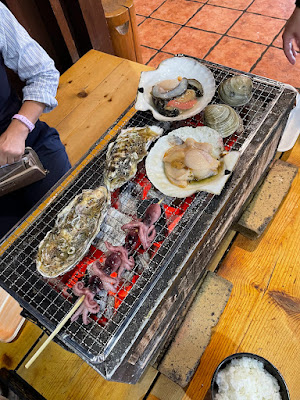










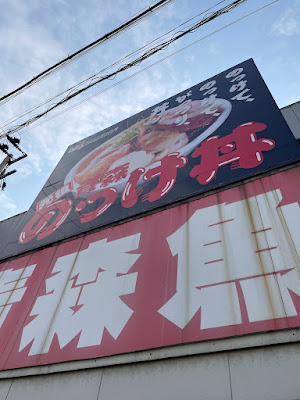

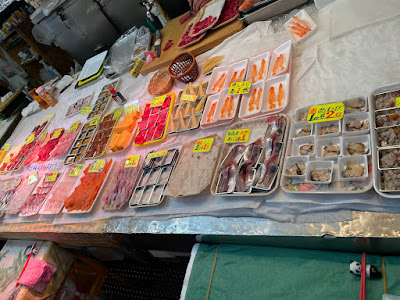










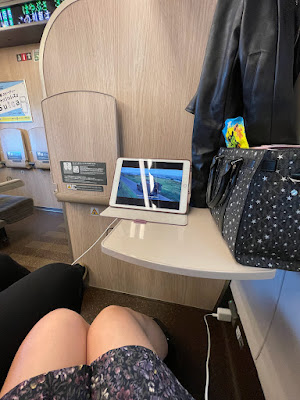

















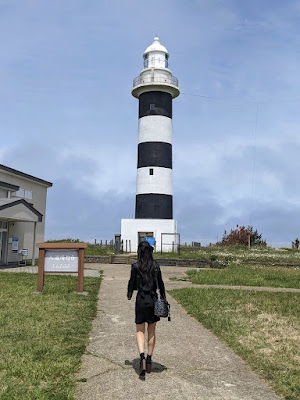





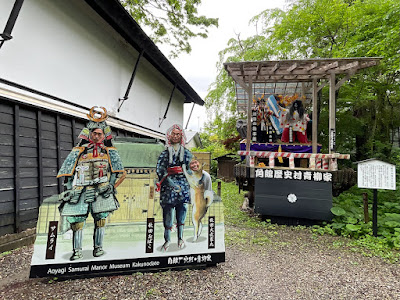


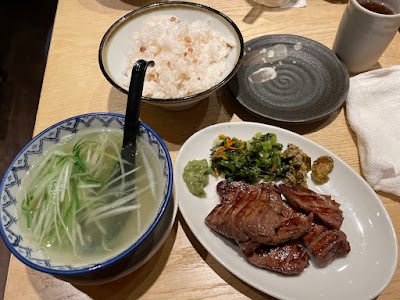











No comments:
Post a Comment